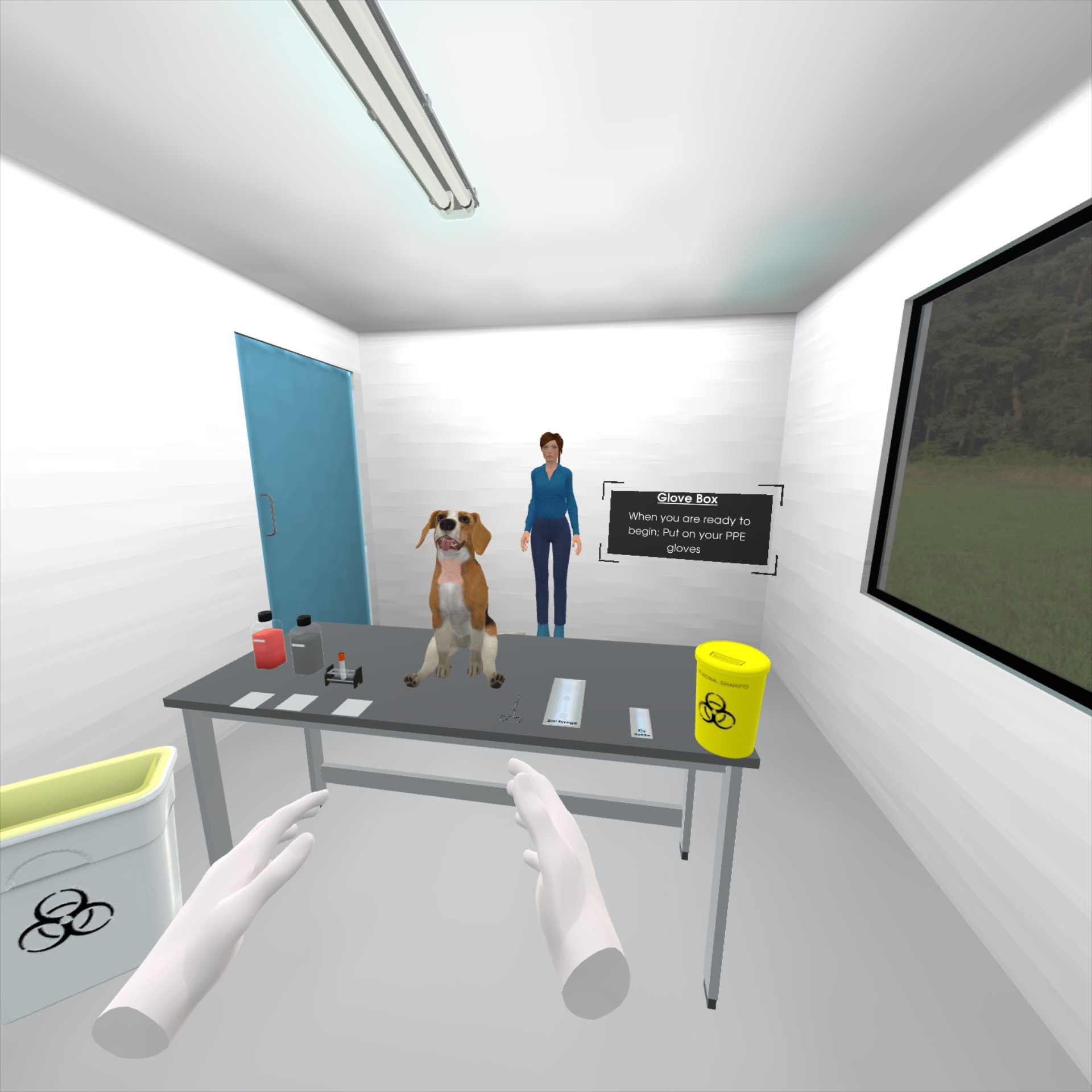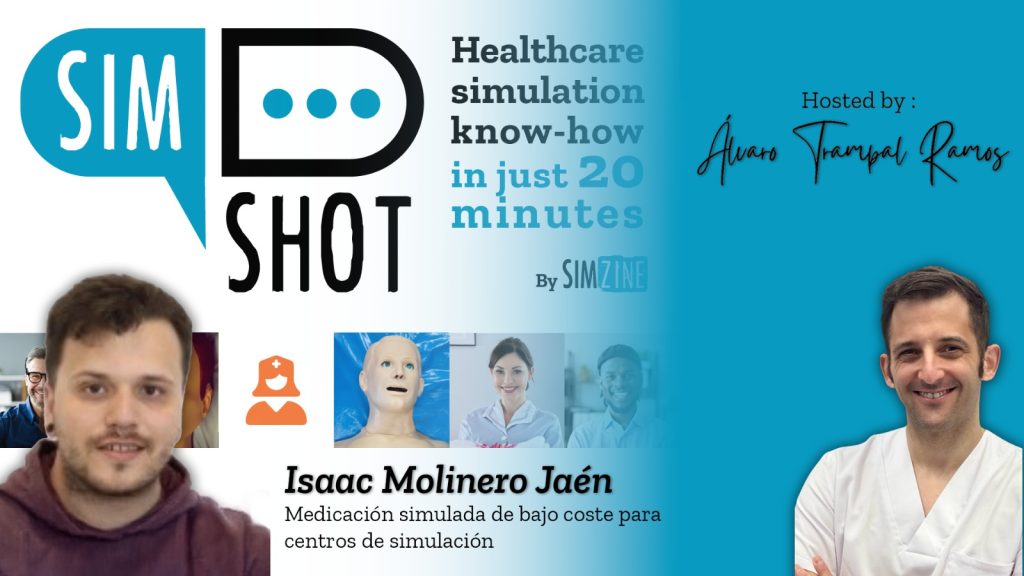Virtual reality is also transforming veterinary simulation. Through immersive and repetitive training, simulation-based learning prepares students for success in clinical practice. This innovative approach not only deepens understanding but also fosters emotional connections, setting new standards in veterinary training. Drawing on her experience in veterinary nursing education, Nina De Franco, Regional Head of Veterinary Studies, at The College of Animal Welfare in the United Kingdom, gives us a comprehensive overview of theoretical foundations and practical applications of VR in the training of new veterinarians.
Introduction to Veterinary Simulation in Education
Virtual Reality (VR) within the veterinary industry is a relatively recent development, despite VR headsets being first released in the 1990’s. The first virtual system in medicine was, however, only introduced in 1965 by Robert Mann, to facilitate a new training environment for orthopedic surgeons allowing them to virtually try out different operations for specific patients.
VRs use in medical education has escalated only in recent years. The College of Animal Welfare is the first Veterinary Nursing training institution to develop and use VR within their courses. The organisation is committed to enriching the learning experience for our students by providing them with immersive opportunities alongside traditional teaching methods. VR has indeed opened a plethora of possibilities for us.

The Role of VR in Veterinary Simulation for Clinical Skills Development
One of the remarkable benefits of VR is its ability to create realistic simulations and scenarios that would be challenging, costly, or even dangerous to replicate in the real world. VR in Veterinary Nursing allows a safe environment whereby students can gain confidence in the day one skills associated with the job role and practise these skills without any adverse impact relating to the animals and clients, or other external factors. VR allows a safe environment for students to develop clinical skills, safe for both patients and the students! They can make the mistakes they need to make to get things wrong and learn from it. The motor skills and kinesthetic learning that is needed to develop memory and retention of these skills can be undertaken and accessed at the student’s convenience.
To provide some context, our veterinary nursing students undertake ‘on the job’ training, completing their course alongside working in a veterinary nursing training practice, either in small animal general veterinary practice or a referral hospital. They receive theory and practical skills training on campus and online and their practical experience is gained within their placements.
As well as their qualification in Veterinary Nursing, our students also gain entry onto the professional register with the Royal College of Veterinary Surgeons (RVCS). In order to enter the register our qualification must include the teaching and assessing of day one skills (RCVS, 2022). The Day One Skills list is a regulatory benchmark of essential clinical skills, developed and reviewed by the RCVS, based on the RCVS Day One Competences for Veterinary Nursing.
Veterinary Simulation and the Path to Competence: Understanding OSCEs
The Objective Structured Clinical Examination (OSCE) was first described by Harden in 1975 as an alternative to the existing methods of assessing clinical performance (Harden et al. 1975).
The OSCE was designed to improve the validity and reliability of assessment of performance, which was previously assessed using the long case and short case examinations. Since then the use of the OSCE has become widespread within both undergraduate and postgraduate clinical education in the likes of medical, nursing, veterinary, dentistry and social work to name but a few.
In an OSCE assessment, students rotate round a series of stations and usually have a set time period to undertake a task which will vary from station to station. These could be communication skills, theatre practice, anaesthesia, radiography, nursing care or lab as examples.
To help visualise an OSCE (fig 2) then you will note the very ‘tick box’ style assessment whereby the student’s work through the task, covering the key steps within a set time frame. The relevance and quality of approach of an OSCE is a tangential research point, however, for now, these are the assessments our regulatory body supports and encourages.

In order to perform well in OSCEs then learners must become competent in a skill. And learners need to move through a series of stages before becoming competent at a skill. There are four levels in skill acquisition (see Fig. 3)
- Unconsciously incompetent
- Consciously incompetent
- Consciously competent
- Unconsciously competent
Beginners will start initially as being ‘unconsciously incompetent’ (unaware of the knowledge and skills required to competently perform the skill) moving through the stages of competence until they reach the stage of having the knowledge to perform the skills competently without thinking about it – like driving a car!
We need to support our students in becoming unconsciously competent in their clinical skills.

Up until recently the, likely universal, approach to OSCE preparation was sessions in the clinical skills lab demonstrating tasks to the students and incorporating repetition, peer review and formative assessments with feedback. The equipment needed for many of these skills would not easily be available outside of the skills lab or a veterinary practice and as such there was always a barrier to the students being able to practise these skills when they were not at University or on veterinary placement.
Enhancing Learning Outcomes with Repetitive Veterinary Simulation Practices
There are a plethora of various models and approaches to skills training, however, what is clear in all of these is one single aspect: repetition!
The principle of repetition is a simple one, however to be impactful it requires a high degree of patience. When the process of repetition is applied, the stimuli learned in this way are remembered better and retained for a longer time. Repeating a task optimises the performance of the skill as the brain itself forms new pathways (Zhan L, Guo D, Chen G et al, 2018).
Spaced repetition has been postulated as an effective learning method. The theory has been formulated from the concept of leaving periods of time between relearning (Vlach HA and Sandhofer CM, 2012). A key aspect of this theory is the suggestion to increase the gaps of time between each learning session. The concept is based on the aim to look at the information/task again at the stage your brain is close to forgetting it. This makes the brain work harder in order to retrieve the information as opposed to repeating it when the information is fresh and easily recalled. This builds a strong memory of the information/skill.
The graph below (fig 4) outlines the concept of spaced repetition, also referred to as distribution of practice. It outlines how we can enhance our memory of information/a skill over a series of repeated sessions set apart by several hours, 1 day, 3 days, a week, 3 weeks and so on.

A study which looked at the effects of spacing practise on skill acquisition and retention in medical training found that spacing the training of the skill facilitates acquisition, short-term and long-term retention and therefore a more efficient learning process for trainees. It concluded that training programmes in medical courses should distribute clinical skills sessions over longer intervals (Spruit EN, Band GP and Hamming JF, 2015).
This repetition is hugely important within clinical skills and the need for students to have the opportunity to repeat the skills being learned over a period of time from when they are taught them.
Through VR, our students can engage in hands-on experiential learning, allowing them to practise skills and techniques in a safe and controlled environment; like having a virtual laboratory or clinic right at their fingertips.
VR has been found to enable a stronger sensory immersion that promotes higher cognitive processing and learning (Brugada-Ramentol V, Bozorgzadeh A and Jalali H. Enhance, 2022). By immersing our students in the subject matter, VR better facilitates long-term knowledge retention. The incorporation of VR into the Veterinary Nursing course is more than just memorising facts; it’s about experiencing and understanding concepts in a realistic, applied, and immersive way.
Furthermore, recent studies have shown VR can foster empathy and emotional connection with the subject matter (Marques AJ et al, 2022). In fields such as veterinary nursing, where empathy is crucial, VR enables our students to develop a deeper understanding and connection with the animals they’ll be working with. It’s a transformative experience that goes beyond textbooks and lectures.
In terms of accessibility, by embracing VR in veterinary nursing education we have broken down barriers. Students are now able to access all equipment such as x-ray machines, anaesthetic machines, laboratory equipment and more, wherever and whenever is convenient to them. This alone can assist with the ‘repeat and retain’ concept and so when students do not have access to the equipment needed then they are still able to practise the skills, further embedding the motor memory of the skills.
Conclusion: The Future of Veterinary Nursing Education through VR Simulation
In conclusion, the integration of VR in education offers a transformative opportunity to revolutionise the learning experience. It allows us to provide our students with immersive, experiential, and inclusive educational encounters. By harnessing the power of VR, we can empower our students to reach their fullest potential and prepare them for a successful future career in veterinary nursing.
References
Akay, M. and Marsh, A. (2001) Information Technologies in medicine. New York: Wiley.
Burgess, A., van Diggele, C., Roberts, C. et al. Tips for teaching procedural skills. BMC Med Educ 20 (Suppl 2), 458 (2020). https://doi.org/10.1186/s12909-020-02284-1
Brugada-Ramentol V, Bozorgzadeh A, Jalali H. Enhance VR: A Multisensory Approach to Cognitive Training and Monitoring. Front Digit Health. 2022 Jun 3;4:916052. doi: 10.3389/fdgth.2022.916052. PMID: 35721794; PMCID: PMC9203823.
CPD UK. (n.d.). Importance of Repetition in Learning. CPD UK. https://cpduk.co.uk/news/importance-of-repetition-in-learning#:~:text=Repetition%20sounds%20simple%20enough%2C%20but,the%20performance%20of%20the%20skill.
Harden RM, Stevenson M, Downie WW, Wilson GM. Assessment of clinical competence using objective structured examination. Br Med J. 1975 Feb 22;1(5955):447-51. doi: 10.1136/bmj.1.5955.447. PMID: 1115966; PMCID: PMC1672423.
Khan KZ, Ramachandran S, Gaunt K, Pushkar P. The Objective Structured Clinical Examination (OSCE): AMEE Guide No. 81. Part I: an historical and theoretical perspective. Med Teach. 2013 Sep;35(9):e1437-46.
Marques AJ, Gomes Veloso P, Araújo M, de Almeida RS, Correia A, Pereira J, Queiros C, Pimenta R, Pereira AS, Silva CF. Impact of a Virtual Reality-Based Simulation on Empathy and Attitudes Toward Schizophrenia. Front Psychol. 2022 May 4;13:814984. doi: 10.3389/fpsyg.2022.814984. PMID: 35602736; PMCID: PMC9116500.
Md Anwarul Azim Majumder, Alok Kumar, Kandamaran Krishnamurthy, Nkemcho Ojeh, Oswald Peter Adams & Bidyadhar Sa (2019) An evaluative study of objective structured clinical examination (OSCE): students and examiners perspectives, Advances in Medical Education and Practice, 10: 387-397
Pottle J. Virtual reality and the transformation of medical education. Future Healthc J. 2019 Oct;6(3):181-185.
Spruit EN, Band GP, Hamming JF. Increasing efficiency of surgical training: effects of spacing practice on skill acquisition and retention in laparoscopy training. Surg Endosc. 2015 Aug;29(8):2235-43. doi: 10.1007/s00464-014-3931-x. Epub 2014 Oct 16. PMID: 25318372.
Vlach HA, Sandhofer CM. Distributing learning over time: the spacing effect in children’s acquisition and generalization of science concepts. Child Dev. 2012 Jul-Aug;83(4):1137-44. doi: 10.1111/j.1467-8624.2012.01781.x. Epub 2012 May 22. PMID: 22616822; PMCID: PMC3399982.
Wolfson College Cambridge (2020) “Memory skills for revision”, Wolfson College Cambridge 02.03.20. https://www.wolfson.cam.ac.uk/about/news/academic-skills-blog-memory-skills-revision. Accessed: 10.05.2023
Zhan L, Guo D, Chen G, Yang J. Effects of Repetition Learning on Associative Recognition Over Time: Role of the Hippocampus and Prefrontal Cortex. Front Hum Neurosci. 2018 Jul 11; 12: 277. doi: 10.3389/fnhum.2018.00277. PMID: 30050418; PMCID: PMC6050388.
READ ALSO











































